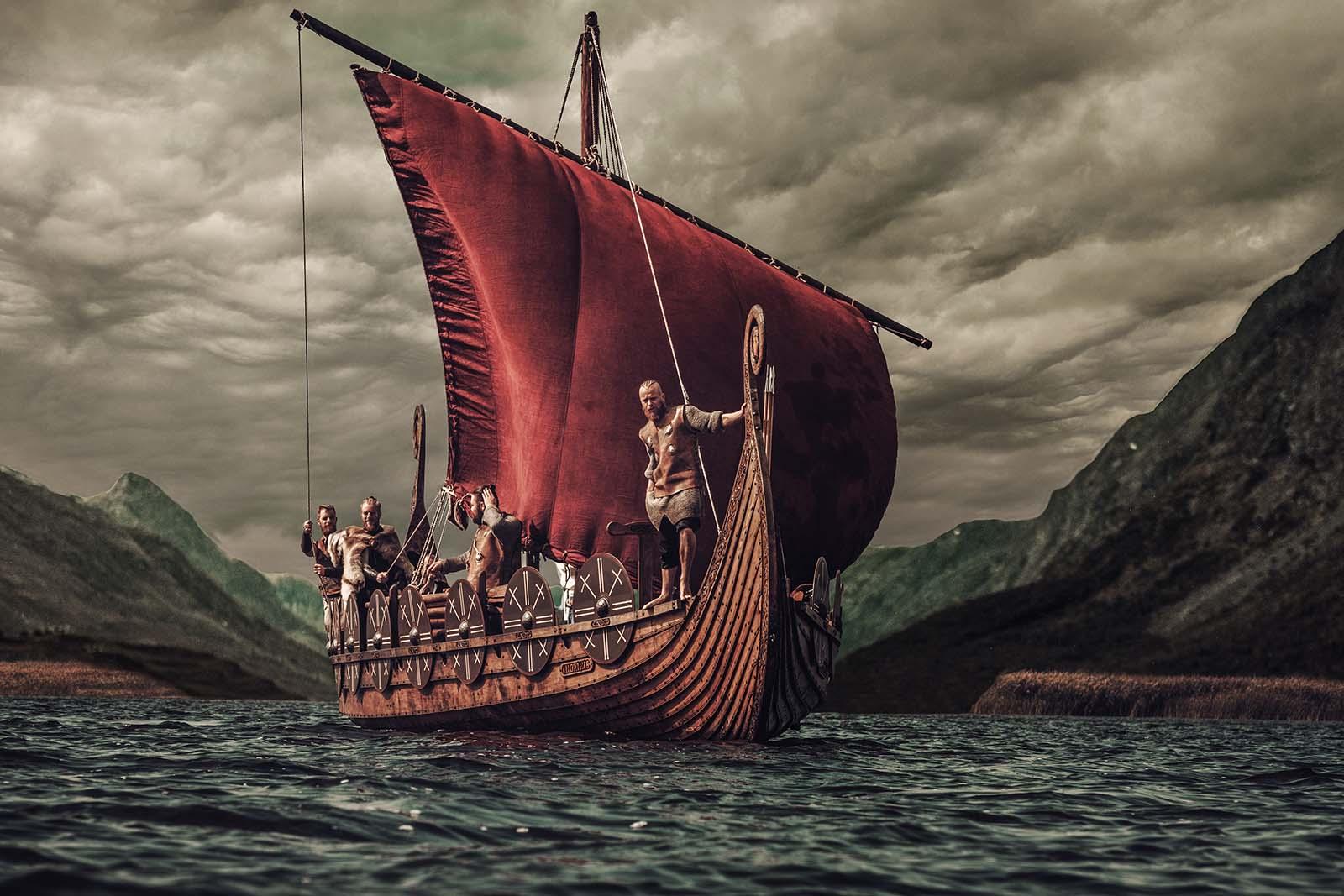Vikings

Myths and facts about the Danish Vikings
From tales of raids and pillaging to Norse mythology and their horned helmets, we all believe we are familiar with the Vikings. How much of this is fact versus fiction? This brief summary can help you refresh your understanding of Vikings. You will be prepared to embark on your very own Viking adventure.
Who exactly were the Norsemen?
The Vikings, or "Vikingr" in Old Norse, are the collective name for the Scandinavian explorers, traders, and warriors who plundered, traded, explored, and populated significant portions of Europe, Asia, and the North Atlantic islands from about the seventh to eleventh centuries.
How long was the Viking Age in existence?
The Viking Age lasted from 793, when the first Viking raid on the Lindisfarne monastery in Northern England occurred, to 1066, when the crucial Battle of Hastings took place. The Viking Age had a significant impact on the medieval history of Scandinavia, Great Britain, Ireland, and a number of other European nations.
What were the Vikings' religious beliefs?
Prior to their conversion to Christianity, the Vikings had their own religious system, Norse mythology. Gods such as Odin, Thor, Loki, and Frey dominated Norse mythology. Death in combat was the most prestigious way to depart this world. This would ensure you a seat in Valhalla, a vast hall ruled by Odin where amazing dinners were hosted nightly and preparations were made to aid Odin in the apocalyptic wars preceding Ragnarok (the end of the world). By the 10 and eleventh centuries, the majority, if not all, of the Norsemen had converted to Christianity, but they maintained many of their pagan beliefs until the late Middle Ages.
Vikings as Explorers
Vikings were feared for their renowned longships, which allowed them to traverse seas, shallow waters, and even land directly on beaches. Throughout what was then the known world, Norsemen traveled extensively throughout the Viking Age. Contrary to popular opinion, Vikings engaged in more than just raiding and plundering. In England, Scotland, Ireland, Normandy, and Iceland, they created a large number of prosperous communities.
How Far Did They Travel?
Did you know that the Vikings were the first Europeans to set foot in North America? Under the leadership of Leif Erikson, the Vikings built a brief settlement in the territory that is now Canada. In 845, Vikings initially rowed up the Seine and laid siege to Paris. Norsemen demanded bribes from the city's rulers and launched three more attacks on Paris before a final assault in 886 ended the Vikings' reign of terror. In addition to terrorizing the entire coast of the North Atlantic, Vikings traveled to North Africa, Russia, Constantinople, and the Middle East.
What exactly was Danish currency?
Danegeld was a tax that the Vikings imposed on the nations they invaded. By paying Danegeld, kings may prevent Viking raids on their regions. English, French, and other European rulers frequently paid the Vikings vast quantities of silver and other treasures as Danegeld.
What is the difference between runes and rune stones?
The Vikings had their own alphabet, known as "futhark," based on the Germanic runic character. Using runes, the Vikings carved historical events into rocks, which are today called rune stones. Typically, the rune stones would describe the valiant exploits of a single chieftain and his warriors, as well as their victories in foreign conflicts. Runic inscriptions found on stones in Scandinavia, the British Isles, and as far as the Black Sea have contributed significantly to our understanding of the Vikings. Jelling, a UNESCO World Heritage site, contains examples of renowned rune stones.
Releated Articles